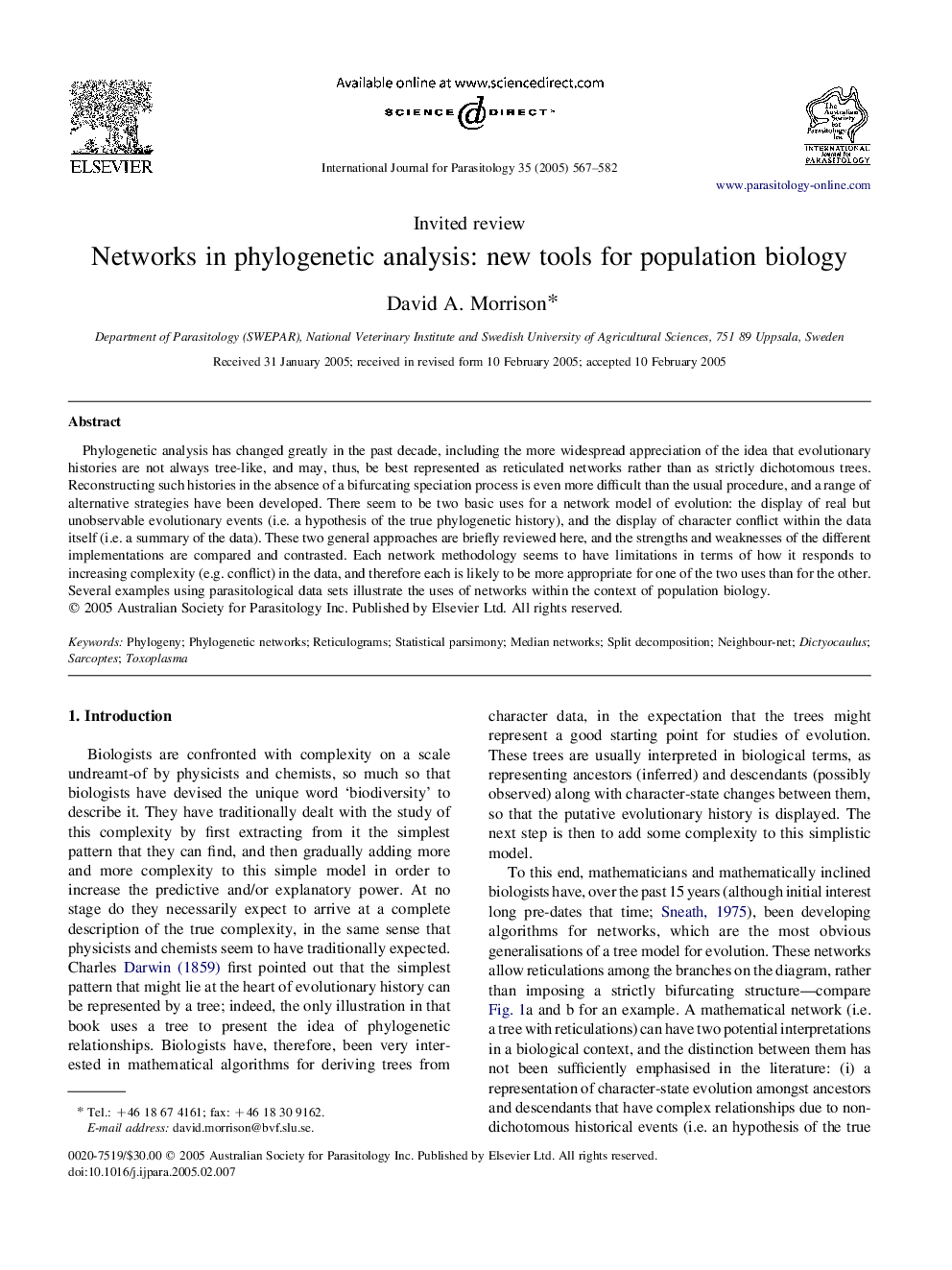| Article ID | Journal | Published Year | Pages | File Type |
|---|---|---|---|---|
| 8979715 | International Journal for Parasitology | 2005 | 16 Pages |
Abstract
Phylogenetic analysis has changed greatly in the past decade, including the more widespread appreciation of the idea that evolutionary histories are not always tree-like, and may, thus, be best represented as reticulated networks rather than as strictly dichotomous trees. Reconstructing such histories in the absence of a bifurcating speciation process is even more difficult than the usual procedure, and a range of alternative strategies have been developed. There seem to be two basic uses for a network model of evolution: the display of real but unobservable evolutionary events (i.e. a hypothesis of the true phylogenetic history), and the display of character conflict within the data itself (i.e. a summary of the data). These two general approaches are briefly reviewed here, and the strengths and weaknesses of the different implementations are compared and contrasted. Each network methodology seems to have limitations in terms of how it responds to increasing complexity (e.g. conflict) in the data, and therefore each is likely to be more appropriate for one of the two uses than for the other. Several examples using parasitological data sets illustrate the uses of networks within the context of population biology.
Related Topics
Life Sciences
Immunology and Microbiology
Parasitology
Authors
David A. Morrison,
